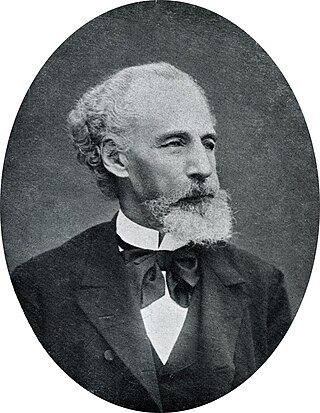
Thekla's lark, also known as the Thekla lark, is a species of lark that breeds on the Iberian Peninsula, in northern Africa, and sub-Saharan Africa from Senegal to Somalia. It is a sedentary (non-migratory) species. This is a common bird of dry open country, often at some altitude. Thekla's lark was named by Alfred Edmund Brehm in 1857 for his recently deceased sister Thekla Brehm (1833–1857). The name is a modern Greek one, Θέκλα, which comes from ancient Greek Θεόκλεια (Theokleia) derived from θεός and κλέος. The population is declining in Spain, but this is a common bird with a very wide range and the International Union for Conservation of Nature has rated its conservation status as being of "least concern".

Henry Scrope, 3rd Baron Scrope of Masham KG, also known in older sources as Lord Scrope was a favourite of Henry V, who performed many diplomatic missions. He was beheaded for his involvement in the notional Southampton Plot to assassinate the king. Some historians believe that the charge was trumped-up to punish him for other acts of disloyalty, and that there may never have been such a plot.

Chelodina, collectively known as snake-necked turtles, is a large and diverse genus of long-necked chelid turtles with a complicated nomenclatural history. Although in the past, Macrochelodina and Macrodiremys have been considered separate genera and prior to that all the same, they are now considered subgenera of the Chelodina, further Macrochelodina and Macrodiremys are now known to apply to the same species, hence Chelydera is used for the northern snake-necked turtles.

Acronicta is a genus of noctuid moths containing about 150 species distributed mainly in the temperate Holarctic, with some in adjacent subtropical regions. The genus was erected by Carl Linnaeus in his 1758 10th edition of Systema Naturae. Caterpillars of most Acronicta species are unmistakable, with brightly colored hairy spikes, and often feed quite visibly on common foliate trees. The hairy spikes may contain poison, which cause itchy, painful, swollen rash in humans on contact. The larva of the smeared dagger moth is unusually hairy even for this genus. Acronicta species are generally known as dagger moths, as most have one or more black dagger-shaped markings on their forewing uppersides. But some species have a conspicuous dark ring marking instead.

Jules-Adenis de Colombeau was a 19th-century French opera librettist, playwright, and journalist.

Eunebristis is a genus of moth in the family Gelechiidae.
Robert Joseph Tubman was a Canadian football player and referee and Ottawa businessman. He was a member of two Grey Cup championship teams.

Rinaldo di (da) Capua was an Italian composer. Little is known of him with any certainty, including his name, although he was known to Charles Burney. He may have been the father of composer Marcello Bernardini.
John Twiname Gardner was a general practitioner and composer of much published parlour and light music. From 1888 to 1903 he worked as a family doctor in Ilfracombe, North Devon, where he conducted the local choral society and was generally a mainstay of musical life in the town. He was the grandfather of the well-known composer John Gardner.

Dichomeridinae is a subfamily of moths in the family Gelechiidae.

La Zingarella or Gypsy Girl is a 140 centimetres (55 in) tall statue of Diana, a combination of an ancient body with additions commissioned by Cardinal Scipione Borghese and executed by Nicolas Cordier, between 1607 and 1612. The additions, a head and the extremities of the body, were in bronze, and white and grey marble. It is on display in Room X in the Galleria Borghese in Rome, Italy.
Strepsigonia nigrimaculata is a moth in the family Drepanidae. It was described by Warren in 1897. It is found in western Malaysia.
Mimozethes argentilinearia is a moth in the family Drepanidae. It was described by John Henry Leech in 1897. It is found in Japan.
Dichomeris stratellus is a moth in the family Gelechiidae. It was described by Thomas de Grey, 6th Baron Walsingham, in 1897. It is found in the West Indies and Trinidad.
Eunebristis gyralea is a moth in the family Gelechiidae. It was described by Edward Meyrick in 1922. It is found in Amazonas, Brazil.
Eunebristis zachroa is a moth in the family Gelechiidae. It was described by Edward Meyrick in 1914. It is found in Guyana.
Moca radiata is a moth in the family Immidae. It was described by Thomas de Grey in 1897. It is found in the Democratic Republic of the Congo and Gabon.

La Zingarella is a 49 x 37 cm oil-on-panel painting executed ca. 1516–17 by the Italian Renaissance painter Correggio. It shows the Rest on the Flight into Egypt, although it omits the figure of Saint Joseph. It is now in the Museo Nazionale di Capodimonte in Naples.









